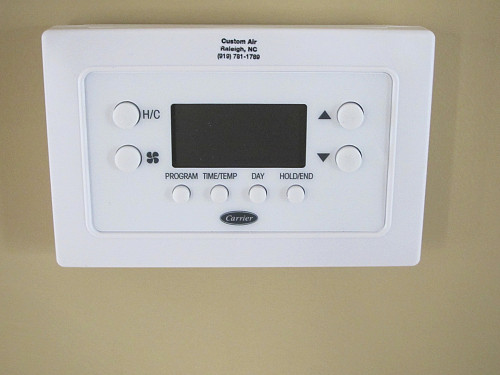Understand Your Home Heating System
 Are you looking to install a new heating system? Or does your furnace need repair or maintenance? Learn the terminology so that you can discuss your home heating needs with contractors and compare their bids as an informed consumer.
Are you looking to install a new heating system? Or does your furnace need repair or maintenance? Learn the terminology so that you can discuss your home heating needs with contractors and compare their bids as an informed consumer.
Baseboard Heaters – Baseboard heaters are electrically powered, zoned heating units. They are generally the most expensive system to run and the quality tends to vary a great deal. The more expensive baseboard heaters run more quietly and give off evener heat.
Carbon Monoxide – Carbon monoxide (CO) is an invisible, odorless, poisonous gas produced due to incomplete combustion of home heating or cooking fuels, such as natural gas, oil, propane, wood, and coal. To protect against poisoning, install a CO alarm next to the sleeping rooms on every floor of your home.
Ductwork -- Most homes are equipped with ductwork -- a system of pipes, known as “ducts,” designed to transport heated (or cooled) air from the HVAC system and distribute it to the rooms of your home.
Energy Star -- The government’s Energy Star program certifies certain appliances, such as furnaces, that meet their energy efficiency standards.
Forced Air Heating -- Forced air heating is the most popular in the US. Natural gas, propane, oil, or electricity is used to heat air in the furnace, which is then circulated throughout the house via a set of ducts. This type of system can result in substantial heat loss through the ductwork, unless it’s well insulated.
Heating Load -- Heating load refers to the amount of heat necessary to maintain a specific indoor home temperature, normally 65 degrees F, no matter what the exterior temperature e.
Heat Pump – A heat pump warms your home by transferring heat, rather than by generating it. While the initial installation is expensive, a heat pump will earn its keep by heating your premises at approximately 25 percent of the cost of conventional methods.
Humidifier – A humidifier is usually attached to your furnace, to humidify the home’s atmosphere using water vapor, which will combat the drying effect of heated indoor air.
HVAC -- HVAC is a commonly used abbreviation for residential or commercial Heat, Ventilation, and Air Conditioning.
Insulation -- Insulation is a material with a low rate of heat transmission that can be placed in walls, ceiling, or floors or around the ductwork to reduce the rate of heat loss.
Plenum – The plenum is the main supply duct of hot (or cool) from a furnace (or air conditioning system).
Radiant Heating -- Radiant heating is a method based on either electrical or hot water heating, radiating through pipes positioned in the room’s floor, walls, or ceiling. One great advantage is that it has minimal heat loss, since it does not involve a ductwork system.
R Value -- R Value measures a material’s capacity to resist the flow of heat. In home construction and improvement, a higher R value is desirable because it indicates a greater resistance to heat loss.
Solar Heating – Solar home heating collects the warmth of the sun’s rays (with the help of solar panels typically mounted on your roof) to heat your home, either immediately or by storing this warmth for later use.
Thermostat -- A thermostat is a device used to regulate room temperature. An energy-saving programmable thermostat allows you to set temperature in advance, according to when the room will be occupied.
Two-stage furnace – An energy-efficient two-stage furnace has two heat settings (as opposed to just one for conventional furnaces) – low for moderately cool weather and high for extreme cold. The furnace automatically adjusts to the appropriate setting.
Weatherstripping – Weatherstripping consists of narrow strips of metal, plastic, or other material, installed around windows and exterior doors to protect against cold drafts and reduce your home heating needs.
Zoned Heating – A zoned heating system is set up by an HVAC contractor so that it can be operated independently in 2 or more different zones of your home. This conserves energy and lowers electricity bills. (Air conditioning may also be zoned.)
Some of the above was adapted from http://www.homebuildingmanual.com/index.html .
Laura Firszt writes for networx.com.
Looking for a Pro? Call us (866) 441-6648

Heating & cooling Average Costs
HVAC Contractors Experiences

Central Air Conditioning For Western NY’s Unbelievably Hot, Humid Weather

Urgent Air Conditioner Repair At Pizzeria Caught In A Heatwave



